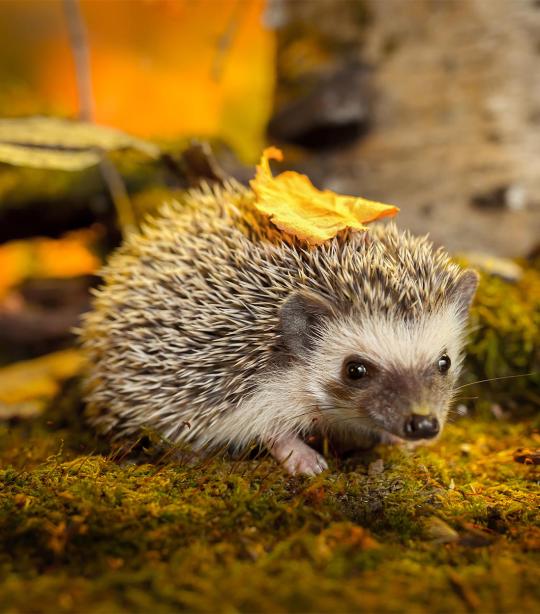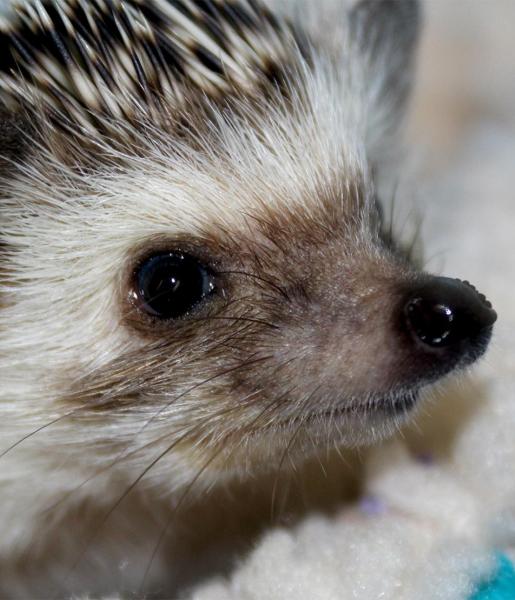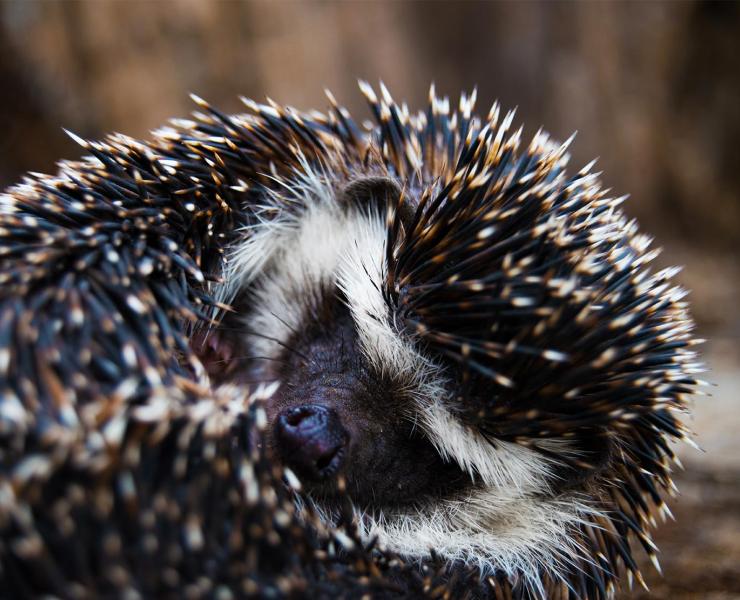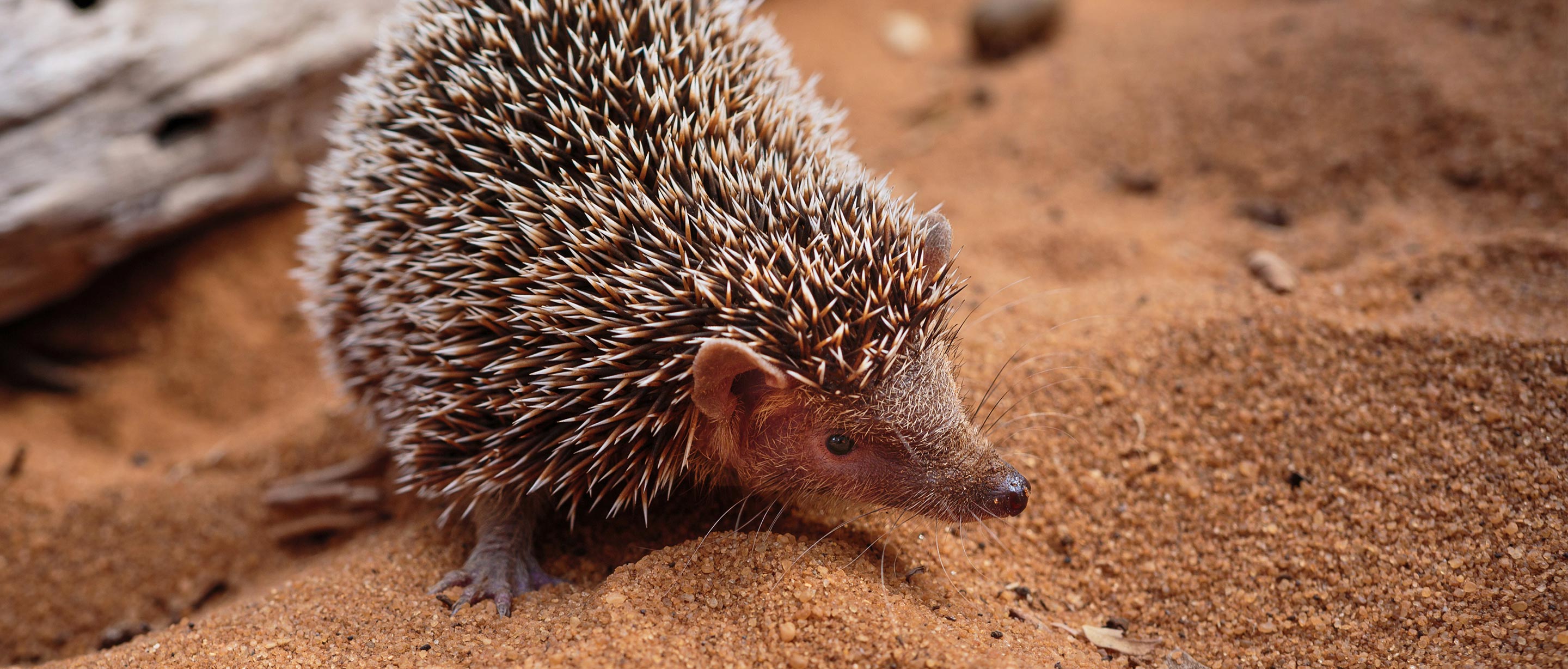What are hedgehogs?
They are a small mammal with short limbs and a body low to the ground. Their most distinctive characteristic is the thousands of stiff, sharp spines — harder and sharper than those of a porcupine — that cover the animal’s back and sides, like a pincushion filled with needles.
Atelerix albiventris
600 grams (21 ounces)
17 to 23 centimeters in length (7 to 9 inches)
3 to 4 years in the wild, up to 11 years in captivity
A variety of climates and terrains; savanna and grassy areas with light undergrowth.
Insectivorous
Between 35 and 58 days, depending on the species
Large birds, most carnivores, humans

Challenges
Humans are pushing hedgehogs out of their habitats.
As human populations grow and increase agricultural activities, expand settlements, and construct roads, these small mammals are losing their living spaces.
Solutions
Our solutions to conserving the hedgehog:
African Wildlife Foundation educates communities about the importance of sustainable practices for agricultural and settlement growth by providing training on best practices and incentivizing conservation agriculture when appropriate.
AWF brings together private investors with local communities to develop tourism in areas rich with wildlife by constructing conservation tourism lodges, like The Sanctuary at Ole Lentille, in Kenya. The lodge provides sustainable income for the community and the 20,000-acre conservancy is a safe home to wildlife.


Behaviors
Hedgehogs are rarely caught off-guard.
This small, spiky animal can curl into a tight ball with spines sticking out in all directions. When they roll up, a special highly developed circular muscle that runs along the side of the body and across the rump and neck contracts and forms a “bag” into which the body, head, and legs are folded. They curl up if disturbed or frightened — only the strongest predators, such as the badger, can pry them open. They also sleep in this position, so are rarely caught unprotected.
They have courting rituals.
Hedgehogs perform a courtship in which the male circles around a female in heat, often for hours at a time. After mating, they usually go their separate ways.
They are anointed.
Hedgehogs have a peculiar practice where they will taste or chew on an object of interest and produce a foamy saliva. They will then proceed to self-anoint and rub this saliva all over their body. The reason for this practice is largely unknown.
Diet
Hedgehogs will eat one-third of their body weights in one night.
They wake up at dusk and begin foraging for food. They eat one-third of its body weight in one night. Their favorite foods are insects, earthworms, snails, and slugs, making it a welcome guest in many suburban gardens — they are even kept as a pet. They are also known to eat eggs, small mammals, birds, frogs, reptiles, fruit, fungi, and roots. Although not completely immune to toxins, they have enough resistance, which allows them to eat small poisonous snakes and scorpions with no ill effect.
Habitats
Where do hedgehogs live?
They inhabit a wide range across a variety of climates and terrains in East Africa, West Africa, and Central Africa. They must have dry shelters on well-drained soil and a good supply of ground-dwelling insects and other invertebrates. They are reported to be abundant in Suburban Nairobi, which meets these habitat conditions.



